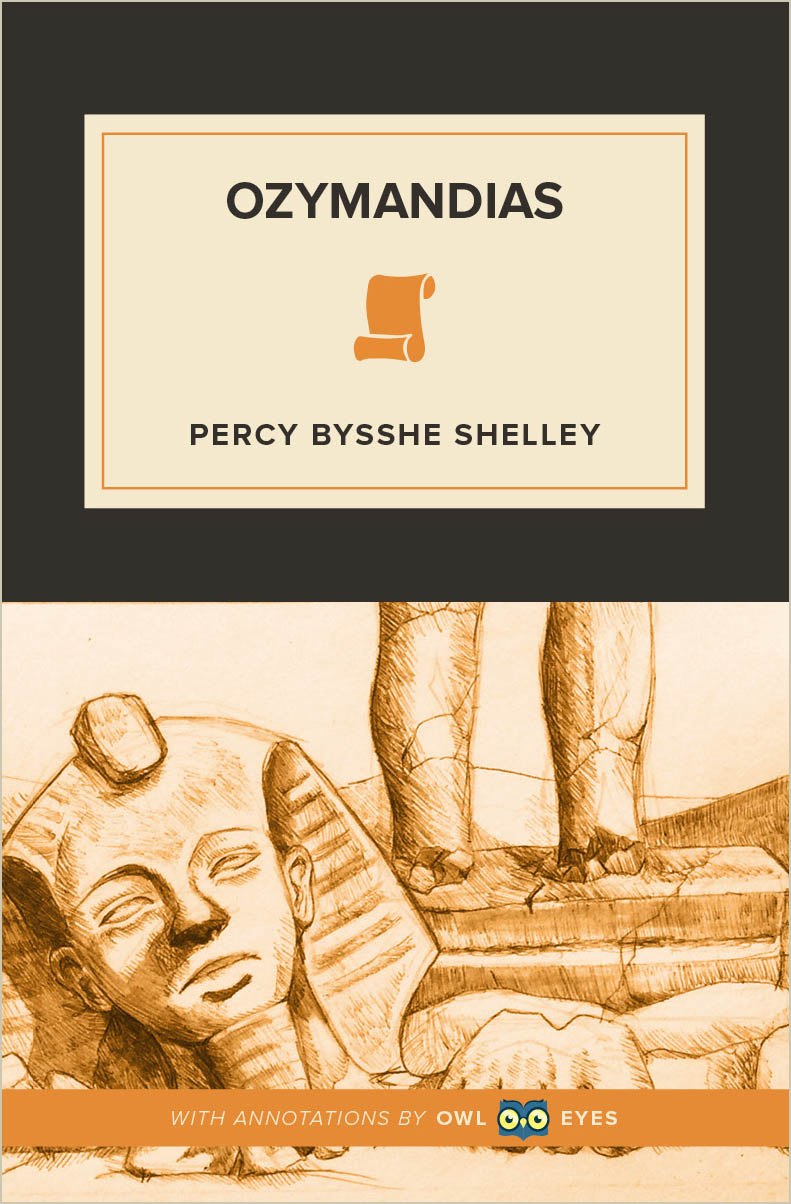


The second caesura comes after 'Stands in the desert.' The very final full stop and ending of the sentence reinforce the sense of isolation surrounding this strange, ruined object. The pause here mimics the traveller's intake of breath before telling his story, dramatising the moment as well as creating distance between the description of the statue and the poet's retelling, almost as if recalling from memory. The first falls after 'Who said:' in the second line. Shelley uses several within the poem and each one has significant effects. CaesuraeĪ caesura is a break of meaning and rhythm within a line. "Colossal" can imply that something is impressive, and when twinned with the term "wreck" makes something of an oxymoron. This can be considered an oxymoron, depending on your analysis of the language. The 'colossal wreck' refers to the statue again 'colossal' of course means 'giant', with a particular reference to giant statues like the Colossus of Rhodes and 'wreck' means anything that has been broken or ruined. Both 'boundless and bare' and 'the lone and level sands' use alliteration to remain memorable - as does the sneer of 'cold command' which trips off the tongue as the poem is recited. Shelley coined several other powerful phrases in this poem and the final lines have entered the language and have been used for the titles of several books and games. It could also imply that hubris can contribute to a downfall, referencing the ancient saying "pride comes before a fall". It could imply that his subsequent obscurity was a punishment from God - a subject that Shelley considered in several of his other poems. Ozymandias calls himself 'king of kings' - a phrase taken from Biblical language - which smacks somewhat of arrogant pride. The structure and form being rigid contrasts to Praise Song For My Mother, another GCSE poem which follows no such structure and is instead a piece of "free verse". The poem is written in iambic pentameter, but there are several variations in the pattern, including reversed first feet ('Nothing beside remains' and 'Tell that its sculptor…'). The second part ironically relates the king's words and adds the final description of the desert setting. In this sonnet, the first part sets up the frame narrative and then describes the statue the poem pertains to. It is not until those six lines that we totally understand the poem and its meaning. Most sonnets break into two parts: an 'octet' (the first eight lines) and a 'sextet' (the last six lines), with the second part commenting on the first. The poem is a sonnet - a fourteen-line single stanza form that originated in Italian love poetry and was popularised in England by Shakespeare. Form Percy Bysshe Shelley by Alfred Clint The lone and level sands stretch far away. Of that colossal wreck, boundless and bare, Look on my works, ye Mighty, and despair!' The hand that mocked them and the heart that fed Which yet survive, stamp'd on these lifeless things, Tell that its sculptor well those passions read Half-sunk, a shatter'd visage lies, whose frownĪnd wrinkled lip and sneer of cold command Who said: Two vast and trunkless legs of stone The message of the poem is generally understood to suggest that all leaders, even tyrants, come to the same end and that all power (and perhaps abuse of power) is temporary and fleeting. The description of the statue is a meditation on the fragility of power and on the effects of time. The poem itself, Ozymandias, imagines a meeting between the narrator and a 'traveller' who describes a ruined statue he - or she - saw in the middle of a desert somewhere. Shelley's poem is one of many that is used for GCSE English analysis, along with the likes of Nettles by Vernon Scannell.


 0 kommentar(er)
0 kommentar(er)
